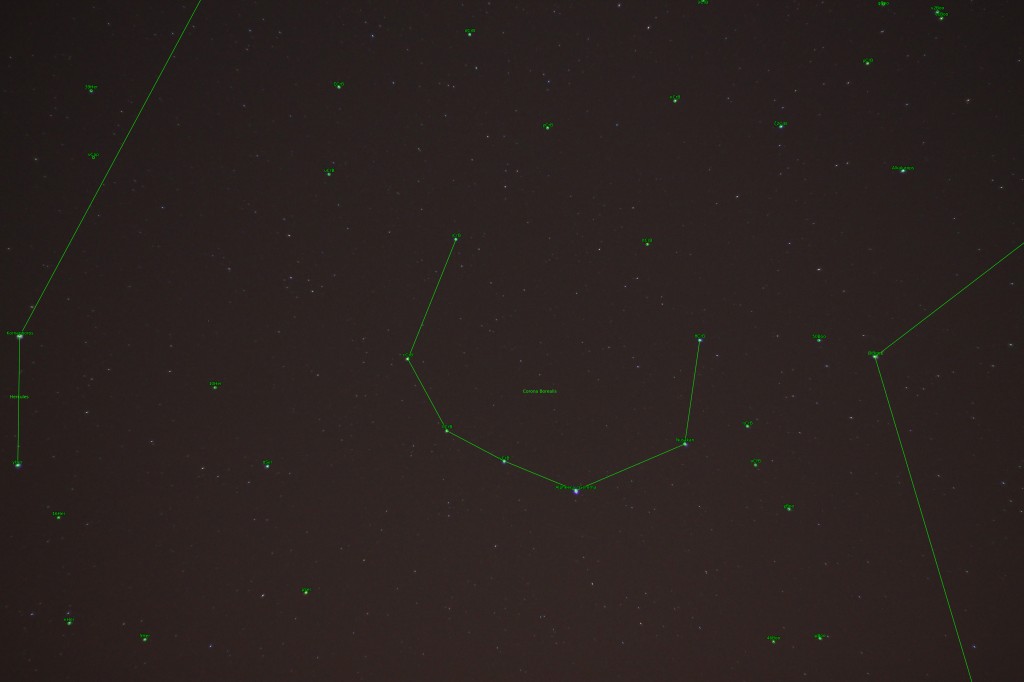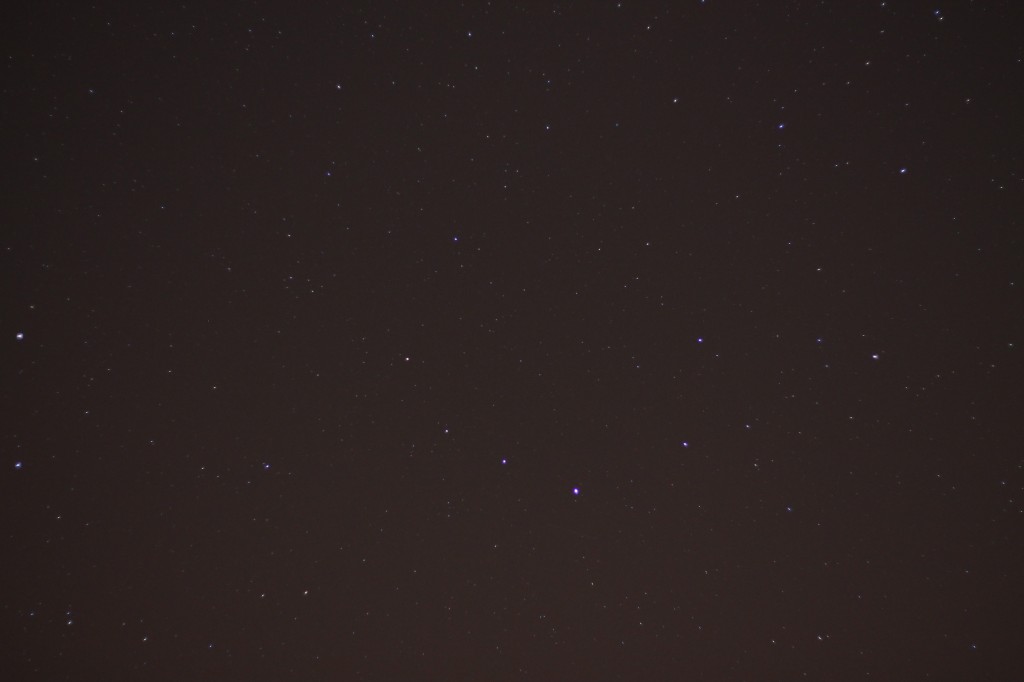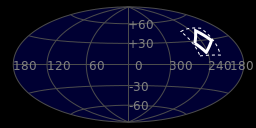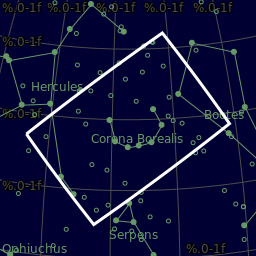Corona Borealis is a small constellation in the northern sky. Its name is Latin for “northern crown”, a name inspired by its shape; its main stars form a semicircular arc.
The seven stars that make up the constellation’s figure are all 4th-magnitude stars, except for the constellation’s brightest star, Alpha Coronae Borealis. This blue-white main-sequence star, also called Alphekka and Gemma, is of magnitude 2.2, though it is an Algol-type eclipsing variable star. Alphekka is 75 light-years from Earth.
The other six stars are Theta, Beta, Gamma, Delta, Epsilon, and Iota Coronae Borealis.
Corona Borealis is home to several binary and double stars. Zeta Coronae Borealis is a double star divisible in small telescopes. It has two blue-white components, 470 light-years from Earth.
Another double star is Nu Coronae Borealis; both components are 550 light-years from Earth but have different radial velocities and are assumed to be unrelated.
The primary, Nu1 Coronae Borealis, is a red-hued giant star of magnitude 5.2; the secondary, Nu2 Coronae Borealis is an orange-hued giant star of magnitude 5.4.
Sigma Coronae Borealis, on the other hand, is a true binary star. Both components are yellow and orbit each other every 1000 years. The system, 71 light-years from Earth, has a primary of magnitude 5.6 and a secondary of magnitude 6.6. Sigma Coronae Borealis is divisible by small amateur telescopes.
Corona Borealis is home to two remarkable variable stars. T Coronae Borealis is an exploding variable star also known as the Blaze Star. Normally placid around magnitude 10—it has a minimum of 10.2 and maximum of 9.9—it brightens to magnitude 2 in a period of hours, caused by a nuclear chain reaction and the subsequent explosion.
T Coronae Borealis is one of a handful of stars called recurrent novae, which include RS Ophiuchi, T Pyxidis, V1017 Sagitarii, and U Scorpii. An outburst of T Coronae Borealis was first recorded in 1866; its most recent outburst was in February 1946.
T Coronae Borealis is a binary star with a red-hued giant primary and a small blue secondary; its period is approximately 8 months. R Coronae Borealis is a yellow-hued variable supergiant star, over 7000 light-years from Earth. Small carbon particles building up in the stellar atmosphere may be responsible.
Corona Borealis contains no bright deep sky objects. Abell 2065 is a highly concentrated galaxy cluster containing over 400 members, the brightest of which are 16th magnitude. The cluster is more than one billion light-years from Earth.




Image Details
1 image 6s 800iso f2 (need more stacked images)
Description from Wikipedia